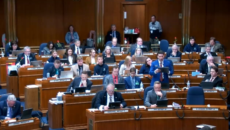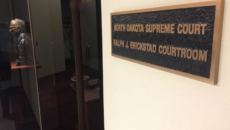Dorso Column: Everything You Ever Wanted To Know About Fiscal Notes

As we get closer to the end of the session the citizens of North Dakota should know about fiscal notes. Fiscal notes are attached to bills being contemplated by the legislature whenever there may be a monetary impact from the proposed legislation.
Fiscal notes are nothing more than an educated guess or estimate of the monetary impact of the legislation. As the full impact of the legislation cannot be known as far as 27 months into the future they certainly deserve a lot of scrutiny. The legislature works on a 24 month biannual budget that is finalized in April of the budget period that starts in July. Thus one can easily see that predictions of revenue or expense can be quite wide of the mark.
All fiscal notes are prepared by the executive branch of state government. As an example, as the legislature debates Gov. Dalrymples expansion of Medicaid the costs are estimates prepared by the Department of Human Services. How much faith legislators should put in those estimates is one for serious debate. If the agency wants the program to pass will they present numbers that support the governor’s proposal or will they use numbers that are their best estimate. A legislator can’t always tell because when contemplating hundreds of millions a few percentage points can make a large difference over 24 months into the future.
Another example will be when the state employee retirement bills are heard. I was always suspect of those estimates. The North Dakota Public Employees Retirement System (NDPERS) prepares the fiscal notes for all of those bills. First one must consider that not only are we looking at 24 months but many years out into the future. NDPERS contracts its own actuarial firm to produce numbers predicting the long term health of the retirement funds. Given that is the case do you believe that they would hire a conservative actuary which suggests that the legislature should be cautious when contemplating enhancements to the retirement package. If the actuary uses a growth in the investment funds of 8% out many years into the future you can readily see how the funds got in trouble. As the bond and stock markets fluctuate it is anyone’s guess as to how appropriate those numbers will be? This is especially problematic when one considers the compounding effect of those kinds of increases in value.
Certainly if enhancements in the lowering of retirement age or years of service are being contemplated the numbers presented by NDPERS would tend to support the fact that the funds are actuarially very sound. In the case of debate over defined contribution versus defined benefit I’ll leave the reader to surmise how the fiscal note will read.
In chapter 13 of my book “When Governance Worked” I relate the story of how legislators were suspect of the estimates that Job Service of North Dakota was providing as we contemplated unemployment reform. The numbers as prepared and presented always seemed to support the arguments of the unions and the Democrats. Some of that was to be expected as the head of Job Service at the time was a Democrat appointee. The fact that they were not consistent as we went through the different scenarios caused some of us to question the integrity of the numbers. When legislators began to crunch their own numbers more inconsistency was found which made us very suspect of the estimates presented by the department.
In the case of higher education the numbers become even more suspect. Since the inception of the higher education round table the numbers presented by the SBHE office are so obscure that I defy anyone to get a truly accurate picture of the budgets of the North Dakota University System. Even the chancellor is somewhat suspect as he is asking for more accounting staff in the SBHE office.
The tax department, Attorney General, Secretary of State, highway department etc., have the responsibility of providing the estimates that the legislature must take into consideration when debating costs or revenues. Are those estimates as accurate as one would like? In the case of the present Secretary of State I’d suggest that you could bank on them. When it comes to higher ed I doubt it.
Thus what you hear in the halls of the legislature are terms such as “Death by fiscal note”. The agency doesn’t like the bill so they assign a big number to its implementation. We found it came down to a matter of trust. If we thought the agency had demonstrated an ability to provide information we could believe they got the benefit of the doubt. If they had been caught inflating numbers the fiscal notes became just another piece of paper.
One of the favorite tricks of the bureaucracy is to provide a fiscal note which reads “the fiscal impact cannot be determined”. I am sure there are times when a good estimate is hard to come by. On the other hand seldom did a bill introduced by an agency which had a fiscal impact ever come with that language.
In conclusion I would suggest whenever you see someone say” a fiscal note as prepared by the legislature” they are totally mistaken. I also suggest that if there is a fiscal note attached to a bill the citizens should ascertain who prepared it. As most legislators learn “follow the money” it will lead you to some surprising conclusions.







